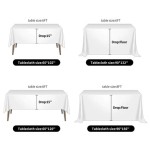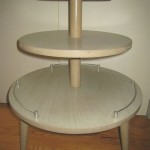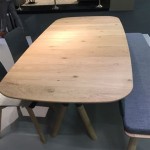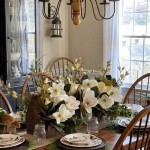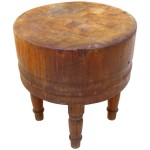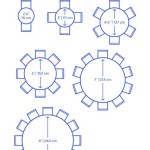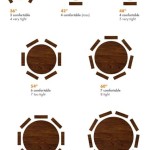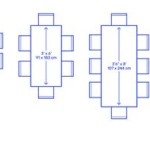How To Pick the Right Tablecloth Size
Selecting the correct tablecloth size involves more than simply covering the table surface. It's about achieving the desired aesthetic, ensuring functional usability, and preventing potential inconveniences. A well-chosen tablecloth complements the table's shape, protects its surface, and enhances the overall ambiance of the space. Taking accurate measurements and understanding standard drop lengths are essential steps in this process. This article provides a comprehensive guide to selecting the appropriate tablecloth size for various table shapes and settings.
Understanding Table Dimensions: The Foundation for Accurate Selection
The very first step in selecting the appropriate tablecloth size is to accurately measure the table. This might seem straightforward, but precision is crucial to avoid purchasing a tablecloth that is either too small or excessively large. The method of measurement will vary depending on the table's shape: rectangular, square, round, or oval.
For rectangular tables, measure both the length and the width. Ensure the measuring tape is held taut and straight to obtain the most accurate dimensions. Record these measurements, noting which is the length and which is the width. These values will form the basis for calculating the necessary tablecloth size.
Square tables require only one measurement, as all sides are equal. Measure the length of one side from edge to edge. Again, ensure the measuring tape is straight and that the measurement is accurate. This single measurement will serve as the foundation for determining the appropriate tablecloth size.
Round tables need their diameter measured. Place the measuring tape across the center of the table, ensuring it stretches from one edge, passes through the center point, and reaches the opposite edge. The measurement obtained is the diameter of the table and is critical for selecting the correct tablecloth size. If you are unable to measure the table due to size constraints or other reasons, you can estimate the diameter by measuring the circumference and dividing it by pi (approximately 3.14159). This will provide a reasonably accurate diameter. Remember to use proper measuring unit like inches or centimeters throughout the process.
Oval tables present a slightly more complex measurement challenge. Measure the length at the longest point of the oval and the width at the widest point. These two measurements, similar to rectangular tables, will be used to calculate the appropriate tablecloth size. The curvature of the oval shape should be considered when visualizing how the tablecloth will drape.
Beyond the basic measurements, consider any extensions or leaves that can be added to the table. If you frequently use these extensions, measure the table with the extensions in place to ensure the tablecloth you select will accommodate the maximum size. Having a tablecloth that fits properly with extensions is preferable to having one that is always too small.
Determining the Desired Tablecloth Drop: Aesthetics and Functionality
The term "drop" refers to the amount the tablecloth hangs over the edge of the table. Choosing the correct drop is crucial to achieving the desired aesthetic and ensuring the tablecloth is functional for its intended purpose. Different drop lengths create different visual effects, and the ideal drop often depends on the occasion and the overall style one is aiming for.
A standard drop length typically ranges from 8 to 12 inches. This provides a balanced look that is neither too short nor too long. It's suitable for everyday use and casual gatherings. A drop of this length allows guests to sit comfortably without the tablecloth interfering with their legs while providing sufficient coverage to protect the table.
For more formal occasions, a longer drop of 15 to 30 inches is often preferred. This creates a more elegant and sophisticated look. A longer drop is commonly used for banquets, weddings, and high-end dining establishments. A full drop, which reaches the floor, is the most formal option. However, it's important to consider the practicality of a full drop, as it can be cumbersome and may present a tripping hazard if not managed carefully. It can also interfere with seating comfort depending on the design and material.
Café-style tablecloths typically feature a shorter drop of around 6 inches. This provides a more relaxed and informal look, suitable for bistros, cafes, and outdoor settings. A shorter drop is also practical in situations where a longer tablecloth might be impractical or undesirable. Shorter drops can be advantageous in areas with high foot traffic or where children are present.
To calculate the required tablecloth size, add twice the desired drop length to each dimension of the table. For example, if a rectangular table measures 40 inches wide and 60 inches long, and a 10-inch drop is desired, the tablecloth size would be calculated as follows: Width: 40 inches + (10 inches x 2) = 60 inches. Length: 60 inches + (10 inches x 2) = 80 inches. Therefore, a 60-inch by 80-inch tablecloth would be suitable. Similarly, for a round table, add twice the desired drop to the diameter to get the required tablecloth size.
Consider the table's location and function when deciding on the drop length. A tablecloth in a high-traffic area might benefit from a shorter drop to prevent tripping, while a tablecloth used for a formal dining event might require a longer drop to create a more elegant atmosphere. Also, consider the type of event. A casual barbecue will not require the same level of formality as a wedding reception.
Material Considerations and Adjustments: Finalizing the Selection
The material of the tablecloth can also influence the final selection process. Different fabrics drape differently, and some materials may shrink after washing. It's important to factor in these considerations to ensure the tablecloth fits properly and maintains its shape over time.
Natural fibers like cotton and linen are prone to shrinkage. It's advisable to purchase a tablecloth slightly larger than the calculated size to compensate for potential shrinkage after the first wash. Following the manufacturer's care instructions is crucial to minimize shrinkage and maintain the fabric's integrity. Pre-washing the tablecloth before its first use can also help to reduce shrinkage.
Synthetic fabrics, such as polyester, are generally less prone to shrinkage and stretching compared to natural fibers. They are also often more resistant to wrinkles and stains, making them a practical choice for everyday use. However, synthetic fabrics may not drape as elegantly as natural fibers, so the aesthetic consideration might warrant a slightly longer drop.
The weight and thickness of the fabric can also impact the way the tablecloth drapes. A heavier fabric will typically drape more smoothly and evenly than a lighter fabric. A thicker fabric also provides greater protection for the table surface. Think of heavier materials for higher-end events and lighter materials for outdoor events.
For outdoor use, consider materials that are water-resistant or stain-resistant. This will help to protect the tablecloth from spills and weather damage. Outdoor fabrics are often treated with special finishes to enhance their durability and resistance to fading from sun exposure.
Patterned fabrics should be carefully considered, especially for large tables. Ensure the pattern is centered and visually appealing when the tablecloth is draped. Large patterns may be overwhelming on a smaller table, while a subtler pattern might be more appropriate. Think of the overall aesthetic. Is it a modern or traditional setting? What colors are you trying to use?
Finally, consider the ease of care when selecting a tablecloth material. Some fabrics require special cleaning methods, such as dry cleaning, while others can be easily washed and dried at home. Choose a material that aligns with your lifestyle and cleaning preferences, ensuring the tablecloth remains in good condition for years to come.
Selecting the right tablecloth size is a multifaceted process that requires careful consideration of various factors, including table dimensions, desired drop length, and material properties. By following these guidelines, one can choose a tablecloth that is both aesthetically pleasing and functionally appropriate, enhancing the dining experience and protecting the table for years to come.

How To Choose The Right Size Tablecloth Ultrapom Wedding And Event Decor Al

Let S Talk Linens The Ultimate Guide To Table Linen Sizes Party Al Ltd Pink Hippo Blog

3 Ways To Choose A Tablecloth Size Wikihow Life

How To Choose The Correct Size Tablecloth For Your Table

How To Choose The Right Size Tablecloth Ultrapom Wedding And Event Decor Al

3 Ways To Choose A Tablecloth Size Wikihow Life

How To Choose A Tablecloth Size

3 Ways To Choose A Tablecloth Size Wikihow Life

Let S Talk Linens The Ultimate Guide To Table Linen Sizes Party Al Ltd Pink Hippo Blog

Linen Sizing Visual Aid Wedding Table Linens Tablecloth Sizes How To Plan
Related Posts

